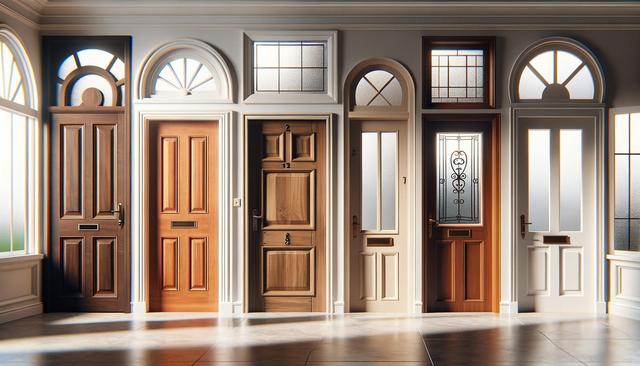The Role of Front Doors in Curb Appeal
A front door plays a crucial role in establishing your home’s curb appeal. It’s often one of the first elements people notice, and it sets the tone for the rest of the property. A well-chosen front door can enhance a home’s architecture, reflect the homeowner’s style, and even increase property value. Whether traditional or contemporary, the design of your front door should align with the overall aesthetic of your home.
Color and material are two of the most impactful aspects of front door design. Bold colors can express personality, while natural wood finishes offer a timeless and warm appearance. For those seeking a more modern look, sleek finishes and minimalist designs can create a sophisticated entry point. Consider these elements when selecting a door:
- Color contrast with exterior walls
- Material durability and maintenance needs
- Hardware style and finish
Adding decorative features like sidelights or transom windows can also elevate your front door’s look, offering both visual interest and natural light inside the entryway.
Security and Safety Considerations
While appearance matters, safety and security are essential functions of any front door. A strong, well-built front door can act as a deterrent to intruders and provide peace of mind. Materials like solid wood, steel, and fiberglass are commonly used for their strength and resistance to forced entry.
Modern front doors often incorporate advanced locking systems that enhance home security. Some of the most effective features include:
- Multi-point locking mechanisms
- Deadbolts with reinforced strike plates
- Smart locks with keyless entry and remote access
Installing a peephole or security camera can add another layer of protection, allowing homeowners to see who is outside before opening the door. If privacy is a concern, consider doors with frosted or tinted glass that maintains natural light while obscuring the view inside.
Energy Efficiency and Insulation
Front doors also contribute to your home’s energy efficiency. Poorly insulated or ill-fitting doors can lead to drafts, heat loss, and increased energy bills. Energy-efficient front doors are designed to keep indoor temperatures stable, reduce noise pollution, and minimize environmental impact.
Look for doors with:
- Insulated cores to reduce heat transfer
- Weatherstripping to seal gaps
- Energy Star ratings indicating tested efficiency
Materials like fiberglass and insulated steel offer excellent thermal performance while maintaining durability. Proper installation is also key to ensuring energy savings, as even the highest-rated door won’t perform well if it’s not fitted correctly.
Choosing the Right Material
The material of your front door affects everything from appearance and security to maintenance and longevity. Each material has its own advantages and considerations, so it’s important to evaluate your priorities before making a choice.
Common front door materials include:
- Wood: Offers a classic look and natural beauty but requires regular maintenance to prevent warping or weather damage.
- Steel: Strong and secure, steel doors are also cost-effective and energy-efficient, though they can dent under impact.
- Fiberglass: Resistant to wear, weather, and dents, fiberglass is a versatile and low-maintenance choice suitable for many climates.
Glass elements can be combined with these materials to add elegance and light, but be sure to choose impact-resistant or double-pane glass for better security and insulation.
Installation and Maintenance Tips
Proper installation ensures that your front door performs at its best in terms of security, insulation, and durability. Hiring a professional installer is recommended, especially for doors with complex features like sidelights or electronic locks.
Once installed, routine maintenance helps extend the life of your door. Here are some simple maintenance practices:
- Check weatherstripping annually and replace if worn
- Lubricate hinges and locks to prevent squeaking and stiffness
- Clean the surface regularly to remove dirt and prevent damage
- Inspect for signs of moisture damage or rust, especially on wood and steel doors
Repainting or refinishing your door every few years can also preserve its appearance and protect it from the elements. Even durable materials benefit from occasional upkeep to stay in top condition.












